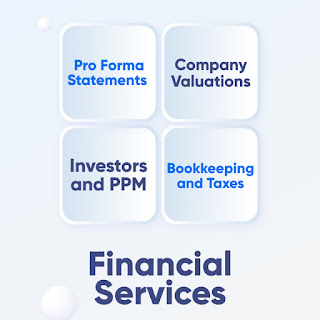Creating a Pro Forma Income Statement: Facts & Facets
A pro forma statement is a look at those 'what-if' situations, where pro forma means projected or future. It's basically a tool that stakeholders, business owners, investors, decision-makers, and creditors, use for examining those hypothetical conditions. They look forward & backward to reveal financial information, which standard financial statements fail at offering.
Best Time to Use Pro Forma Statements
These financial statements are uniquely insightful; hence using them in a number of situations makes sense. Here's an outline of the best time to use these statements.
Financial
Modeling & Business Planning
It's convenient for business leaders to look at the side-by-side comparisons concerning different assumptions to guide strategies. For example, management can decide between two individual proposals or plans. They might create these statements for scenarios to witness what might serve definite goals & visions the best. As a matter of fact, pro forma statements creation for such scenarios is a prerequisite exercise that is letting the decision-makers:
● Create budget and sales projections
● Identify different assumptions
● Collect results in the P&L projections
● Use data to generate projections of cash flows
● Compare balance sheets of pro forma
● Gauge effectiveness of scenarios against the industry benchmarks with the implementation of financial ratio analysis
Gauge
Impacts of Monetary Decisions
A common use of pro forma statements is to project the impacts of significant events. A business combination or even refinancing debt is an example of it. A company makes the use of pro forma income statements, cash flow statements, and balance sheets in some situations. It helps them project how an important event can affect the financial position.
Impacts
on Finance Reports
Pro forma is not just for those internal purposes. Companies even use them in the external reports for creditors, potential investors, and stockholders. The publicly traded companies can include pro forma statements with SEC filing, proxy statements, and registration statements.
It makes sense as stockholders require understanding the impacts of significant changes that are relative to the financial statements of the company. The changes might be:
● Impact of a change in an adopted account standards
● Updated estimate on economic life & net residual value of assets
● The business combination from acquisition, investment, disposition, and even combined interests of existing lines of businesses
● Correcting technical or other errors made in filed reports earlier
Understanding How to Create a Pro Forma
Income Statement
Before you dive into the complexities of creating a pro forma income statement, you need to understand it. To start off, you need to sit down with the statement from the year.
The next step is to consider how every item will undergo a change in future years. Perform this before the end of the year. Remember, you have to estimate final expenses and sales for the current year and prepare the income statement for the following year.
In a nutshell, pro forma income statements have a varied range of use in different scenarios. But come what the scenario may be, one must always ensure using them in organized ways. Learn more from an astute team of professionals working with COSTA CONSULTANTS.

Comments
Post a Comment